Last Updated on April 5, 2024

Estimated reading time: 9 minutes
Updated for 2022 / 2023
By Jim Ferri
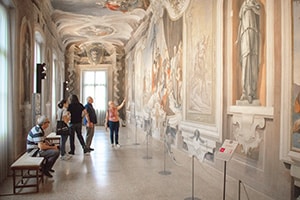
It may be hard to believe, but there are still fantastic, beautiful places in Italy that aren’t overrun with travelers.
Some of them, in fact, aren’t far from popular tourist areas, which make them an excellent add-on to a trip.
One example is the province of Friuli Venezia Giulia, northeast of Venice, which is still relatively unknown outside Italy. It has beautiful scenery, fascinating historical sites, and incredible food and wines. In fact, the food and wine is so special The New York Times named the province “Italy’s secret garden.”
The only thing missing are the tour buses.
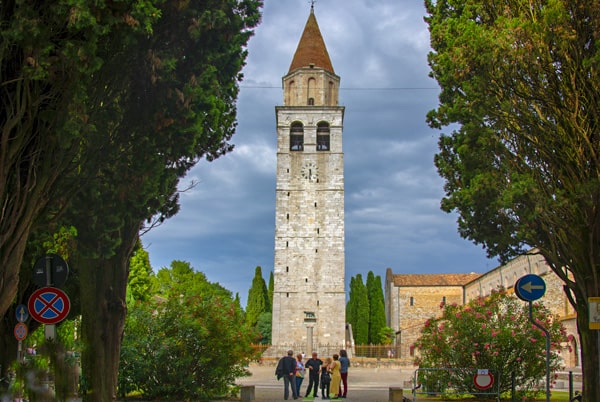
Once Part of the Austro-Hungarian Empire
Snuggled between the serene Adriatic and the rugged Dolomites, Friuli Venezia Giulia forms Italy’s eastern border with Slovenian and part of its northern border with Austria. It was once part of the Austro-Hungarian Empire, which accounts for its slight Austrian flavor, especially in its architecture and coffee-culture. Nevertheless, it firmly remains deliziosamente Italiano.
Since it’s been overshadowed by other top places to visit in Italy such as Venice and Tuscany, relatively few travelers have ever visited the area. I’m guilty also since I’ve always rushed through en route elsewhere, making a mental note to return to explore it someday.
When I finally had the opportunity to spend a few days in the region, it yielded more than a few surprises.
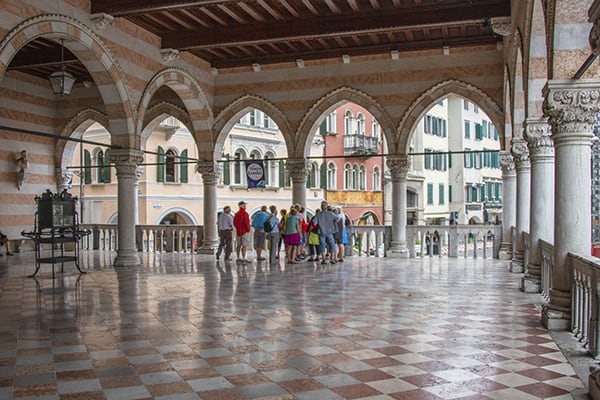
From Mountains to the Plains in Friuli Venezia Giulia Province
Traveling up from Venice, my visit to Friuli Venezia Giulia began in the Friulian Dolomites, part of the mountain range on Italy’s northern border. A UNESCO World Heritage Site, it’s a beautiful, relatively untouched wilderness region. It’s popular with hikers and climbers, with trails that connect a series of rustic chalets. In the winter it’s a favorite with cross-country skiers.
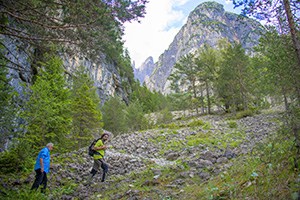
From the mountains we headed to the plains, our sights set on ancient Udine, in the middle of the province. Having seen the Austrian-German influence on the building styles in the mountain towns, I was surprised by Udine.
First and foremost was its Loggia del Lionello – called “the most beautiful Venetian square on the mainland” – on the city’s beautiful Piazza della Libertà, the oldest square in the town.
Built in Venetian Gothic style soon after the Venetians conquered the city, it stands across from another architectural gem, the Torre dell’Orologio, a picturesque 16th-century clock tower. It’s all incredibly beautiful.
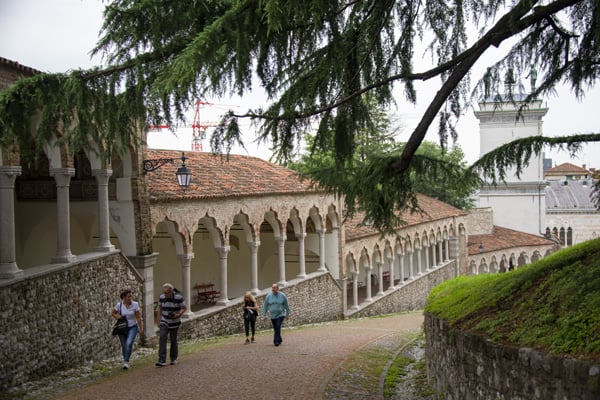
A Good Walking City
Walk up Piazzale del Castello, next to the tower, and you’ll find Udine’s 16th-century castle (now a museum). You’ll also be rewarded with a nice panorama of the city. Back down below, you’ll see works by Giambattista Tiepolo in the city’s Duomo, the Cathedral of Santa Maria Annunziata. More spectacular, however, are the Tiepolo frescos in the Palazzo Arcivescovile, the nearby Diocesan Museum.
Leave some time to wander around the picturesque streets back down near the Loggia, such as Via Daniele Manin leading to Port Manin, the old city gate. And before you leave, visit the comfortable Caffé Contarena adjacent to the Loggia, for a coffee or glass of wine. Popular with locals, its beautiful interior, complete with soaring ceilings and gold leaf. It is reminiscent of the coffeehouse culture of Vienna.
After a coffee in the Caffé, our small group set off for a late lunch at the Ristorante La Taverna. The restaurant is in Colloredo di Monet Albano, a small town about a half-hour outside Udine. A highly rated restaurant, it’s well worth the detour. If you visit in the warm weather, request a table on the terrace overlooking the countryside.
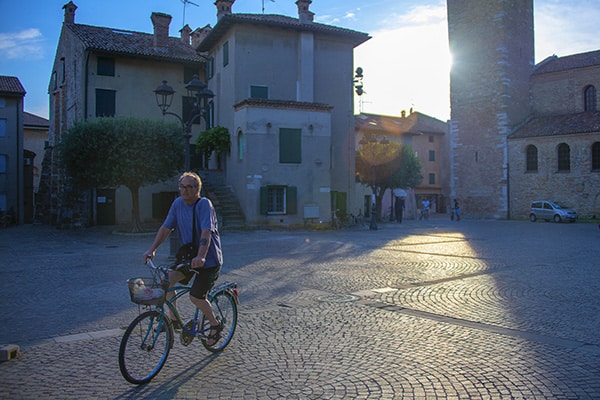
The Golden Island and Its Great Lagoon
Italians know Grado as the “Golden Isle.” It’s located on an Adriatic peninsula between Venice and Trieste, the principal city of Friuli Venezia Giulia Province. It’s a handsome, Venetian-style seaside town with a pedestrian zone. The old town is chockablock with restaurants and cafés spilling over into its streets, alleyways and little town squares.
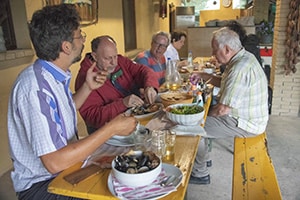
The Romans came to Grado from historic Aquileia, via a road now covered by the sea. Centuries later Hapsburg aristocracy traveled from Vienna to bathe on Grado’s long, sandy beaches. They were likely attracted as much by the local seafood and regional wines as they were by the sea.
Grado is also famous for its lagoon, a wetland area of numerous islets. Split by canals and little streams, it teems with birdlife. Some of its tiny islands still have casoni, the old fisherman houses. One has a small seafood restaurant, Ai Fiuri de Tapo.
On a hired boat we traveled out to the restaurant for a large, fresh seafood lunch. We dined on long narrow wood tables under the trees and were served by the owner, a ruddy-faced fisherman who looked as if he had been brought there by central casting. It was a delightful afternoon, both at the restaurant and while cruising the lagoon.
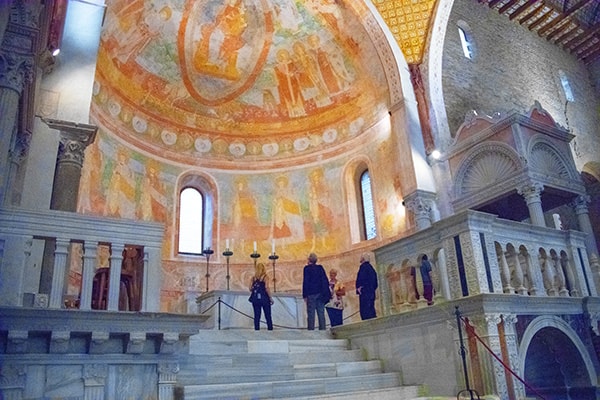
Friuli Venezia Giulia Province – the Historical Aquileia
Later that day we made the short drive to Aquileia. It’s a historical city both in the Roman Empire and in the Christianizing of Northern and Eastern Europe. Unfortunately, its small size belies its importance in Roman times. Today you still see the remains of villas, temples, and markets scattered about the present-day town.
Aquileia’s primary attraction, however, is not Roman ruins (although I wish we had the time to explore them a bit). It is its magnificent basilica. It is home to some of the most ornate floor mosaics in Europe, if not the world, which cover a large area of the nave and the crypt. The mosaics – in fact, the entire basilica – is incredibly beautiful.
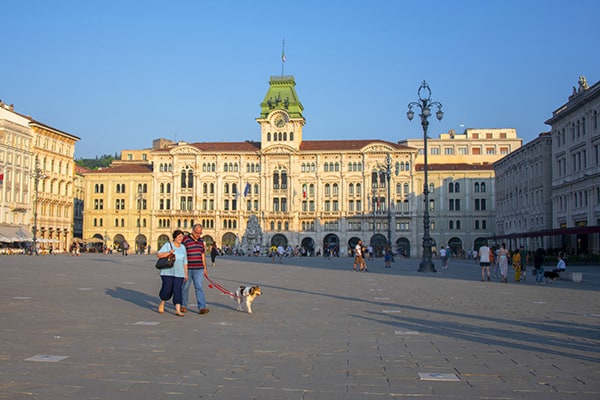
In Friuli Venezia Giulia Province – Atmospheric Trieste
Further eastward you find that Trieste is a very different Italian city.
You see that immediately in its architecture, which is more central European than southern, and in its café society and coffee culture inherited from the Viennese. It is, in fact, the leading coffee importing/roasting city in Europe and home to European coffee giant Illy Caffè.
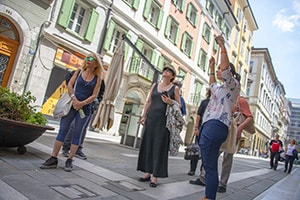
Its cultural identity was born then the city was a free port in the Austro-Hungarian Empire. That attracted numerous nationalities who remained in the city. Today the city is a meld of Italian, Austrian, Slovenian, Croatian, Yiddish, and more, sprinkled in the urban mix.
With such an international mix it’s little wonder the city counts a Greek Orthodox, Serbian Orthodox, Lutheran Evangelical, Swiss Evangelical, Roman Catholic, and a Synagogue among its religious sanctums. And it all works well, visually and otherwise, making Trieste the most cosmopolitan city in Italy.
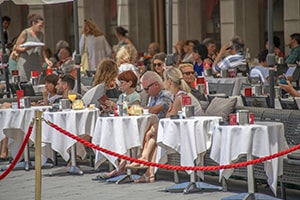
It’s also fascinating, comfortable, and an easy city to walk about. In its Piazza dell’Unità d’Italia, the largest sea-facing square in Europe, the Venetian influence is quite apparent, from the waiters serving patrons at the awning-covered outdoor cafés, right down to Harry’s Bar. Just a few hundred feet away the Canale Grande reaches several blocks into the city, soothing canal-side café patrons with beautiful views.
If you’re looking for more wonderful views, visit Castello di Miramare, the castle of Maximilian I outside the city. And, of course, there are those beautiful Friulian Dolomites.
If You Go:
You can reach Friuli Venezia Giulia Province (Trieste Station) easily by train from Venice in 2–2 ½ hours, about 2 hours by bus. The train fare is $10-55, although it is less expensive if you book online in advance. A 2 hour-bus ride to Triests from Venice is $10-13. If you are traveling by car, it is a 1½-hour drive from Venice to Udine, approximately 2 hours to Trieste.
Alitalia, Air Serbia, Lufthansa CityLine, Lufthansa, United, Ryanair, Etihad Airways and Air Europa all have direct flights to Trieste’s (TRS) Friuli Venezia Giulia Airport. Although there is a small airport near Udine (Udine-Campoformido Airport), it is used mainly by private planes.

Well done, Sir. Jim!
Ed
Thank you Ed!
Thank you so much, sir, for giving such a lovely blog.
We will add these to our month long trip in July!!
A month in Europe? Lucky you!
My uncle was from Trieste he has long since pass but often mentioned the beauty of this city on again off again Italian City in the north of Italy ruled by numerous surrounding nations. During his youth period WWII it was know maybe still is today as ship building region of Italy I believe.
We have been to italy number times never have gotten to Trieste nor San Marino hope to before long when and I f we are non restricted from traveling back into European nations. Thanks for all great information Jim on traveling Europe.
Hi Frank,
If you go to Trieste, try to go deeper into Friuli Venezia Giulia to places such as Udine and Aquileia. Both are wonderful.
And if you do get to Trieste drive or take the train down to Rimini where you can take a bus to San Marino, which is quite interesting.
Jim
Mr. Ferri – Your article about the Friuli Venezia Giulia region was highly informative. You made me want to go there! Such a remarkable display of landscapes, fusion of culture and history, plus food, wine and coffee. Thanks for this… I just put it on my list!
Thank you for writing about our home region of FVG. Your information is acurate and well described. Yes Friuli has been off the radar for North American travelers, but definitely a destination for Germans in the summer and Austrians who love the wine and Europeans who love outdoor activities like skiing, hiking and cycling. Eventhough the region has been hosting important events like the Barcolana since 1969, and several important food and wine festivals, the region has thankfully not yet seen the big bus groups. But with the arrival of more cruise ships in Trieste because of the ban in Venice for large cruise ships, the city of Trieste is already feeling the weight of too many people. But it is a city not to be missed when visiting the region!
Thank you Audrey. I love Friuli!
Jim